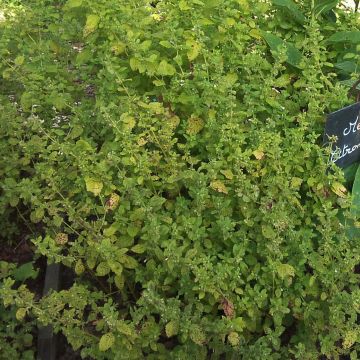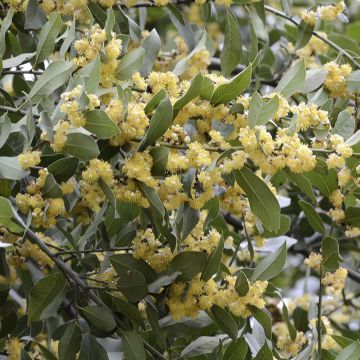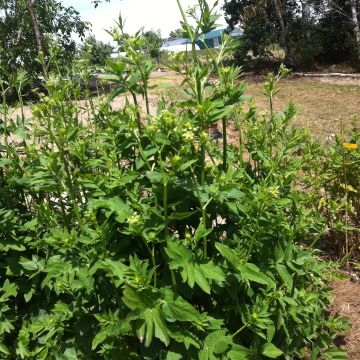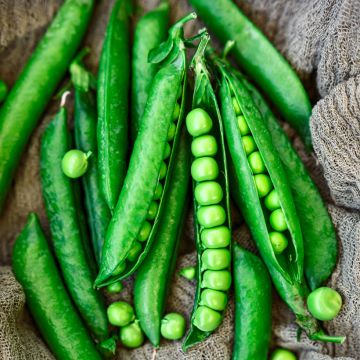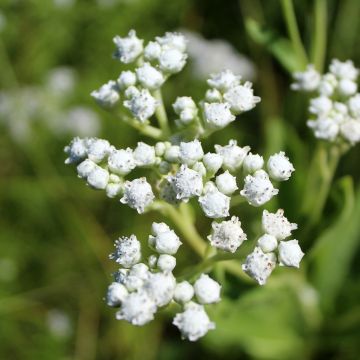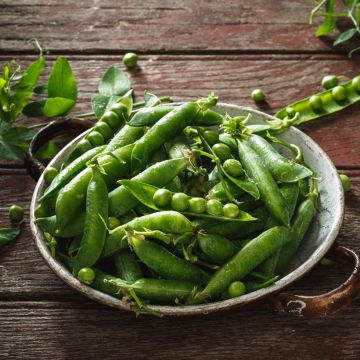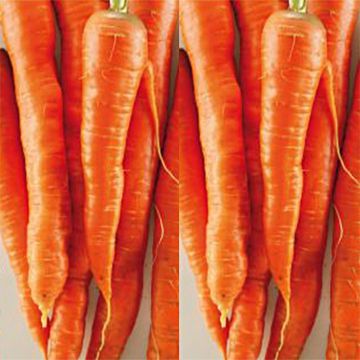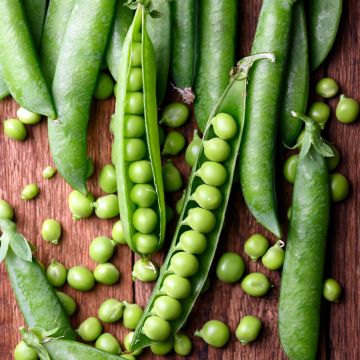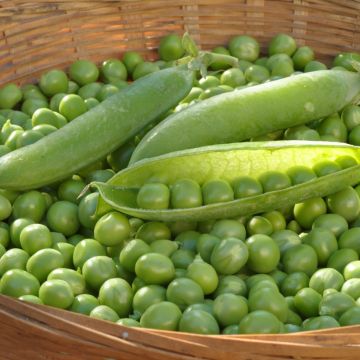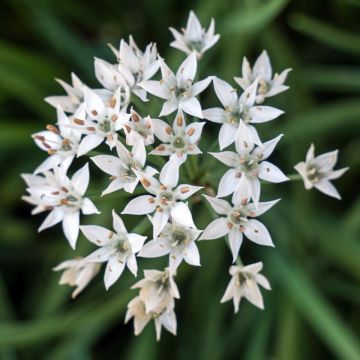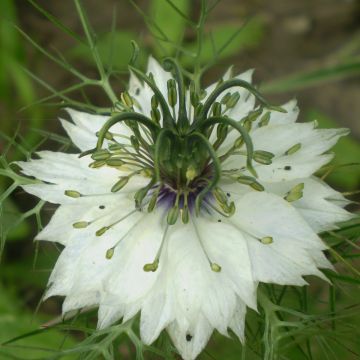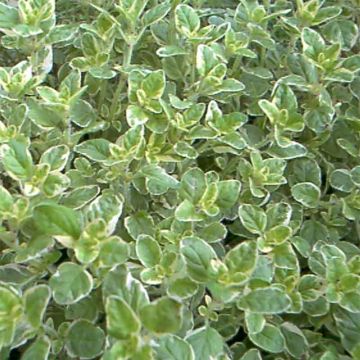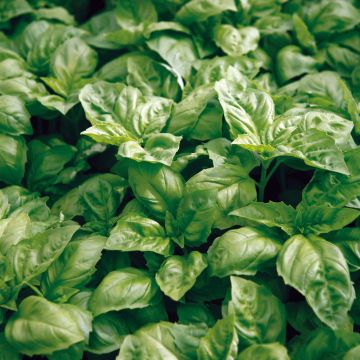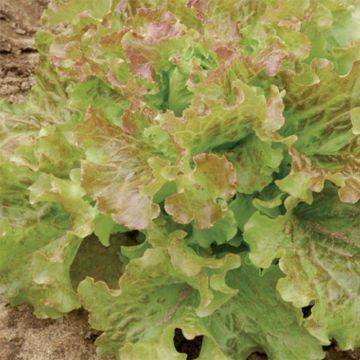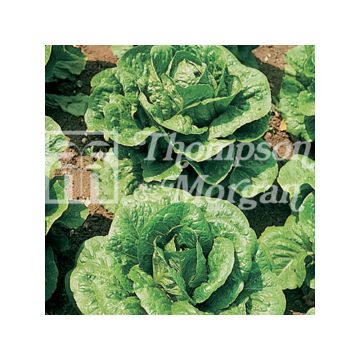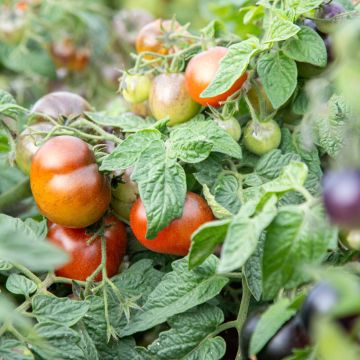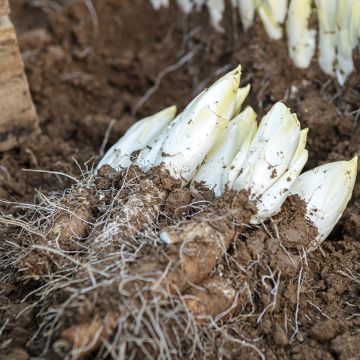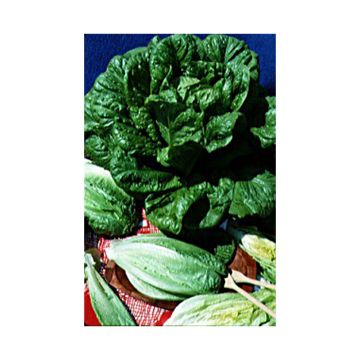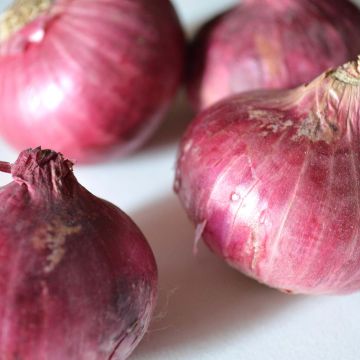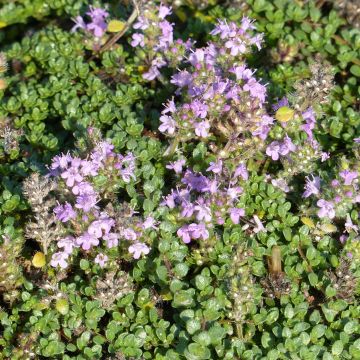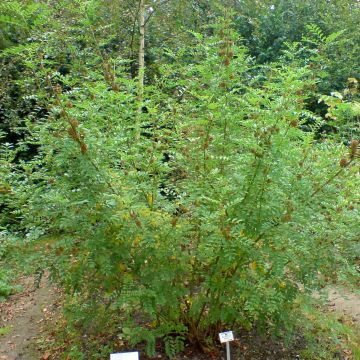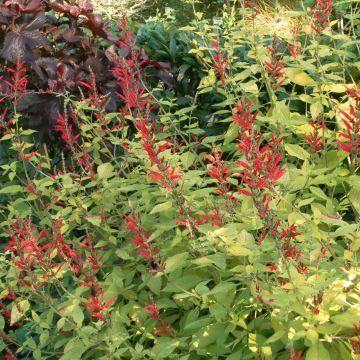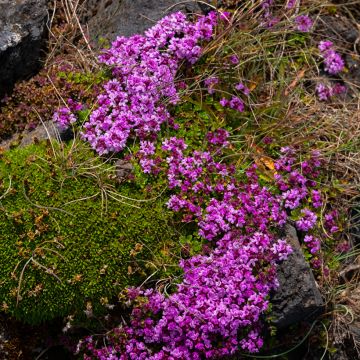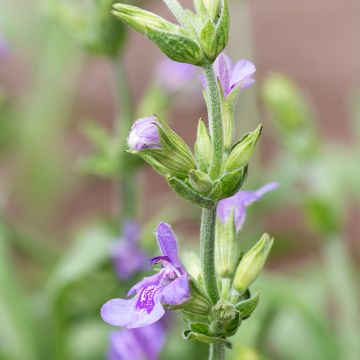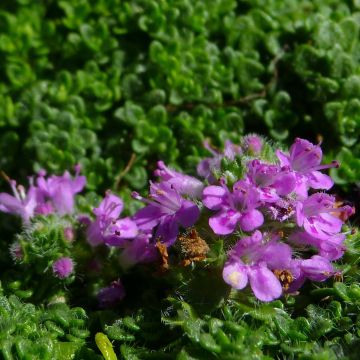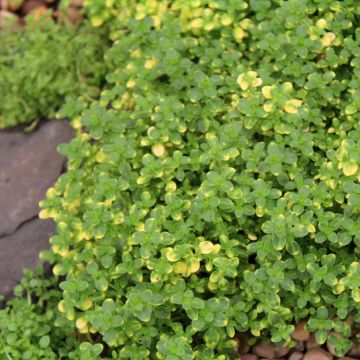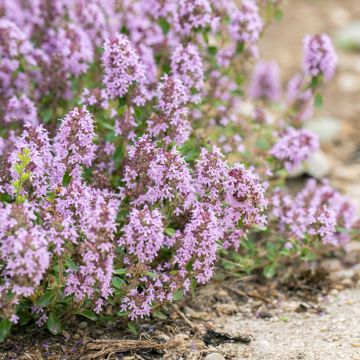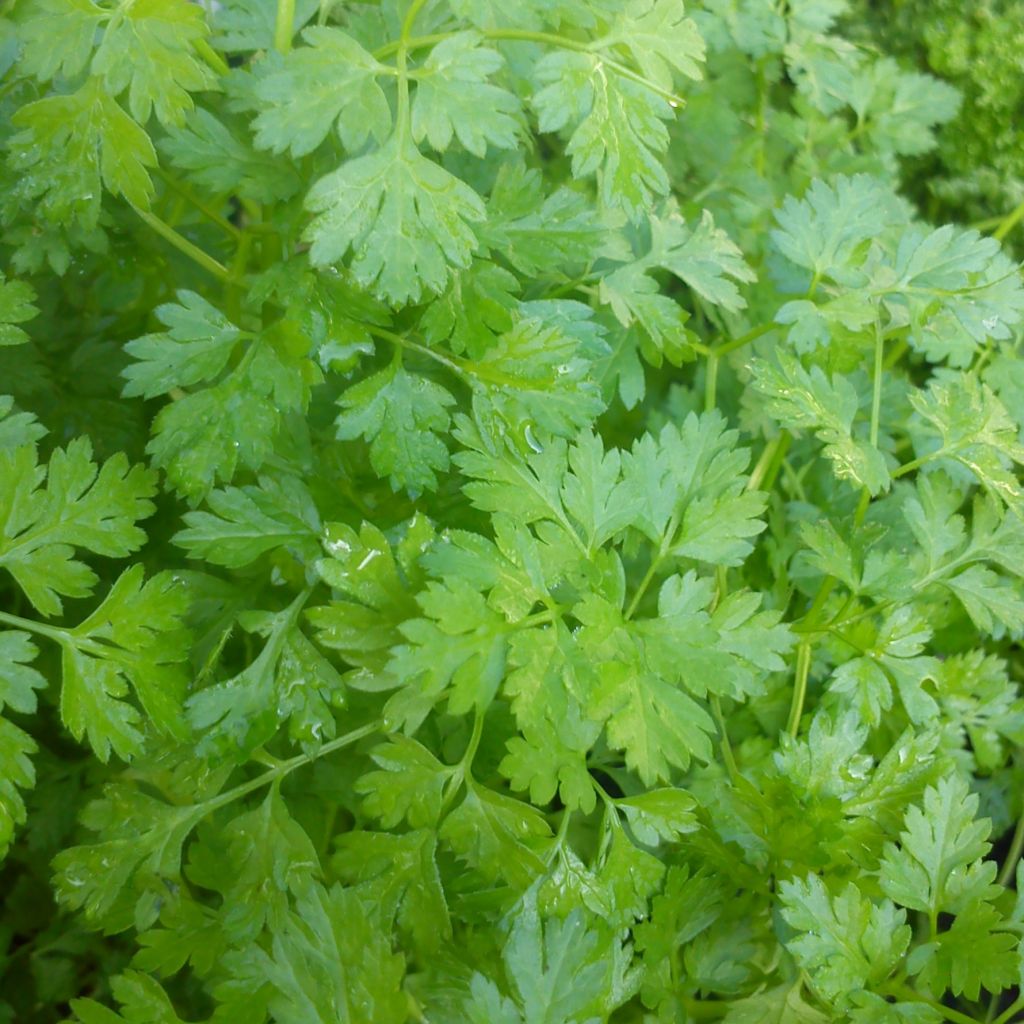

Cerfeuil commun en plants - Anthriscus cerefolium
Common chervil in plants - Anthriscus cerefolium
Anthriscus cerefolium
Garden Chervil, Chervil, Hedge Parsley
I received a pot containing a tiny stem of chervil that is barely visible, it's not serious. I even have the photo.
Sofia, 26/02/2023
Why not try an alternative variety in stock?
View all →This plant carries a 6 months recovery warranty
More information
We guarantee the quality of our plants for a full growing cycle, and will replace at our expense any plant that fails to recover under normal climatic and planting conditions.
From €5.90 for pickup delivery and €6.90 for home delivery
Express home delivery from €8.90.
From €5.90 for pickup delivery and €6.90 for home delivery
Express home delivery from €8.90.
Description
Chervil common (Anthriscus cerefolium) is part of the 'fines herbes', along with parsley, chives, and tarragon, ideal for enhancing salads, soups, or sauces. Its finely cut flat leaves have a slight hint of anise. This aromatic plant is grown in the vegetable garden or in a pot and prefers a semi-shaded exposure. Plant it in spring or summer and harvest from April to October.
Chervil, also known as garden chervil, medicinal chervil, and hedge parsley, is an aromatic plant from the Apiaceae family (formerly Umbelliferae). Chervil is part of the 'fines herbes' (along with parsley, chives, and tarragon) and is cultivated for its leaves, which have a light anise flavour. In cooking, the fresh finely chopped leaves add flavour to raw vegetables and salads. For hot dishes (vegetables, roasted meats, fish, soups, etc.), add the leaves at the end of cooking to preserve its flavour.
Chervil is grown in the vegetable garden or in a pot. Its height can range from 40 to 60 cm (16 to 24in). It prefers moist, light, and fairly humus-rich soils. Prefer a semi-shaded exposure.
Harvest: Cut the leaves at ground level, according to your needs. The harvest takes place from April to October. In summer, chervil produces pretty white flowers in umbels, but it is advisable to pinch the flower stalks to promote leaf growth.
Storage: To fully enjoy their aroma, chervil leaves should be consumed fresh as soon as possible. For long-term storage, you can freeze them. Chervil leaves are sometimes dried (by hanging the stems in a dry place), but drying reduces their fragrance.
Gardener's tip: Chervil likes the sun in spring, but it quickly flowers in summer when it is too exposed. You can associate it with some plants that will provide shade during their growth in summer, such as tomatoes, for example.
Report an error about the product description
Common chervil in plants - Anthriscus cerefolium in pictures
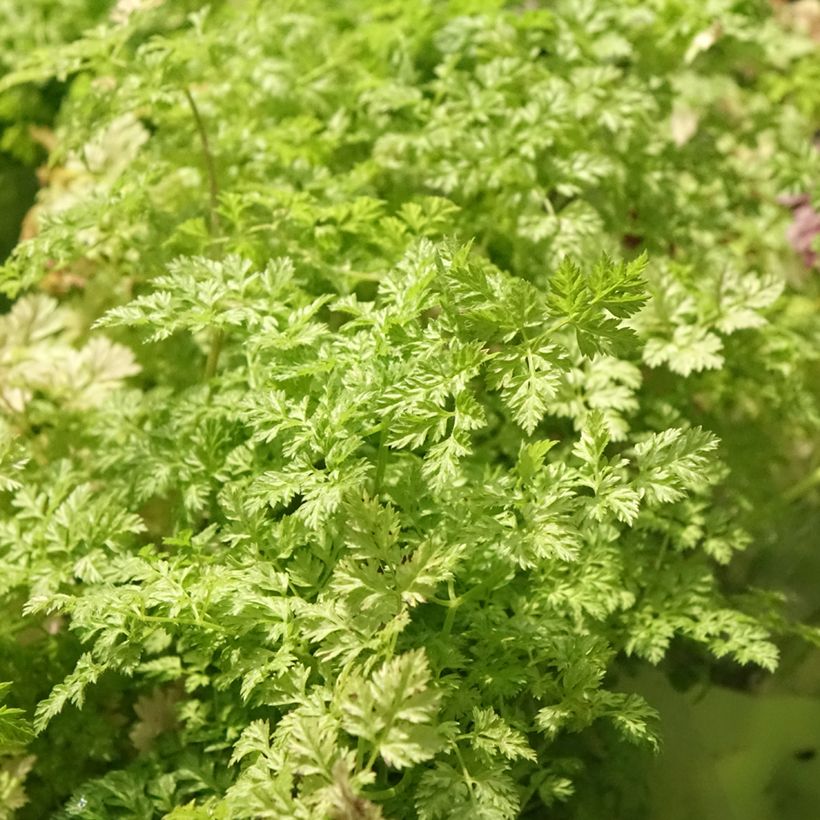

Harvest
Plant habit
Foliage
Other Vegetable garden A to Z
Planting and care
Chervil appreciates damp, light and fairly humus-rich soils. Prefer a semi-shaded exposure. Chervil is planted in spring and summer, from March to August.
In open ground: Dig a hole (3 times the volume of the root ball). Add compost to the bottom of the hole. Place the root ball and cover with soil, compact. Water to keep the soil moist. Space the plants 10 cm (4in) apart in rows and 20 cm (8in) between rows.
In a pot: place gravel or clay balls at the bottom of the pot to facilitate drainage. Fill the pot with a mixture of 1/3 compost, 1/3 sand, 1/3 garden soil. Place the root ball and fill with the mixture, compact. Water to keep the soil moist.
During cultivation, water moderately, mainly in case of drought.
Cultivation
Care
Intended location
-
, onOrder confirmed
Reply from on Promesse de fleurs
Herbs
Haven't found what you were looking for?
Hardiness is the lowest winter temperature a plant can endure without suffering serious damage or even dying. However, hardiness is affected by location (a sheltered area, such as a patio), protection (winter cover) and soil type (hardiness is improved by well-drained soil).

Photo Sharing Terms & Conditions
In order to encourage gardeners to interact and share their experiences, Promesse de fleurs offers various media enabling content to be uploaded onto its Site - in particular via the ‘Photo sharing’ module.
The User agrees to refrain from:
- Posting any content that is illegal, prejudicial, insulting, racist, inciteful to hatred, revisionist, contrary to public decency, that infringes on privacy or on the privacy rights of third parties, in particular the publicity rights of persons and goods, intellectual property rights, or the right to privacy.
- Submitting content on behalf of a third party;
- Impersonate the identity of a third party and/or publish any personal information about a third party;
In general, the User undertakes to refrain from any unethical behaviour.
All Content (in particular text, comments, files, images, photos, videos, creative works, etc.), which may be subject to property or intellectual property rights, image or other private rights, shall remain the property of the User, subject to the limited rights granted by the terms of the licence granted by Promesse de fleurs as stated below. Users are at liberty to publish or not to publish such Content on the Site, notably via the ‘Photo Sharing’ facility, and accept that this Content shall be made public and freely accessible, notably on the Internet.
Users further acknowledge, undertake to have ,and guarantee that they hold all necessary rights and permissions to publish such material on the Site, in particular with regard to the legislation in force pertaining to any privacy, property, intellectual property, image, or contractual rights, or rights of any other nature. By publishing such Content on the Site, Users acknowledge accepting full liability as publishers of the Content within the meaning of the law, and grant Promesse de fleurs, free of charge, an inclusive, worldwide licence for the said Content for the entire duration of its publication, including all reproduction, representation, up/downloading, displaying, performing, transmission, and storage rights.
Users also grant permission for their name to be linked to the Content and accept that this link may not always be made available.
By engaging in posting material, Users consent to their Content becoming automatically accessible on the Internet, in particular on other sites and/or blogs and/or web pages of the Promesse de fleurs site, including in particular social pages and the Promesse de fleurs catalogue.
Users may secure the removal of entrusted content free of charge by issuing a simple request via our contact form.
The flowering period indicated on our website applies to countries and regions located in USDA zone 8 (France, the United Kingdom, Ireland, the Netherlands, etc.)
It will vary according to where you live:
- In zones 9 to 10 (Italy, Spain, Greece, etc.), flowering will occur about 2 to 4 weeks earlier.
- In zones 6 to 7 (Germany, Poland, Slovenia, and lower mountainous regions), flowering will be delayed by 2 to 3 weeks.
- In zone 5 (Central Europe, Scandinavia), blooming will be delayed by 3 to 5 weeks.
In temperate climates, pruning of spring-flowering shrubs (forsythia, spireas, etc.) should be done just after flowering.
Pruning of summer-flowering shrubs (Indian Lilac, Perovskia, etc.) can be done in winter or spring.
In cold regions as well as with frost-sensitive plants, avoid pruning too early when severe frosts may still occur.
The planting period indicated on our website applies to countries and regions located in USDA zone 8 (France, United Kingdom, Ireland, Netherlands).
It will vary according to where you live:
- In Mediterranean zones (Marseille, Madrid, Milan, etc.), autumn and winter are the best planting periods.
- In continental zones (Strasbourg, Munich, Vienna, etc.), delay planting by 2 to 3 weeks in spring and bring it forward by 2 to 4 weeks in autumn.
- In mountainous regions (the Alps, Pyrenees, Carpathians, etc.), it is best to plant in late spring (May-June) or late summer (August-September).
The harvesting period indicated on our website applies to countries and regions in USDA zone 8 (France, England, Ireland, the Netherlands).
In colder areas (Scandinavia, Poland, Austria...) fruit and vegetable harvests are likely to be delayed by 3-4 weeks.
In warmer areas (Italy, Spain, Greece, etc.), harvesting will probably take place earlier, depending on weather conditions.
The sowing periods indicated on our website apply to countries and regions within USDA Zone 8 (France, UK, Ireland, Netherlands).
In colder areas (Scandinavia, Poland, Austria...), delay any outdoor sowing by 3-4 weeks, or sow under glass.
In warmer climes (Italy, Spain, Greece, etc.), bring outdoor sowing forward by a few weeks.

































